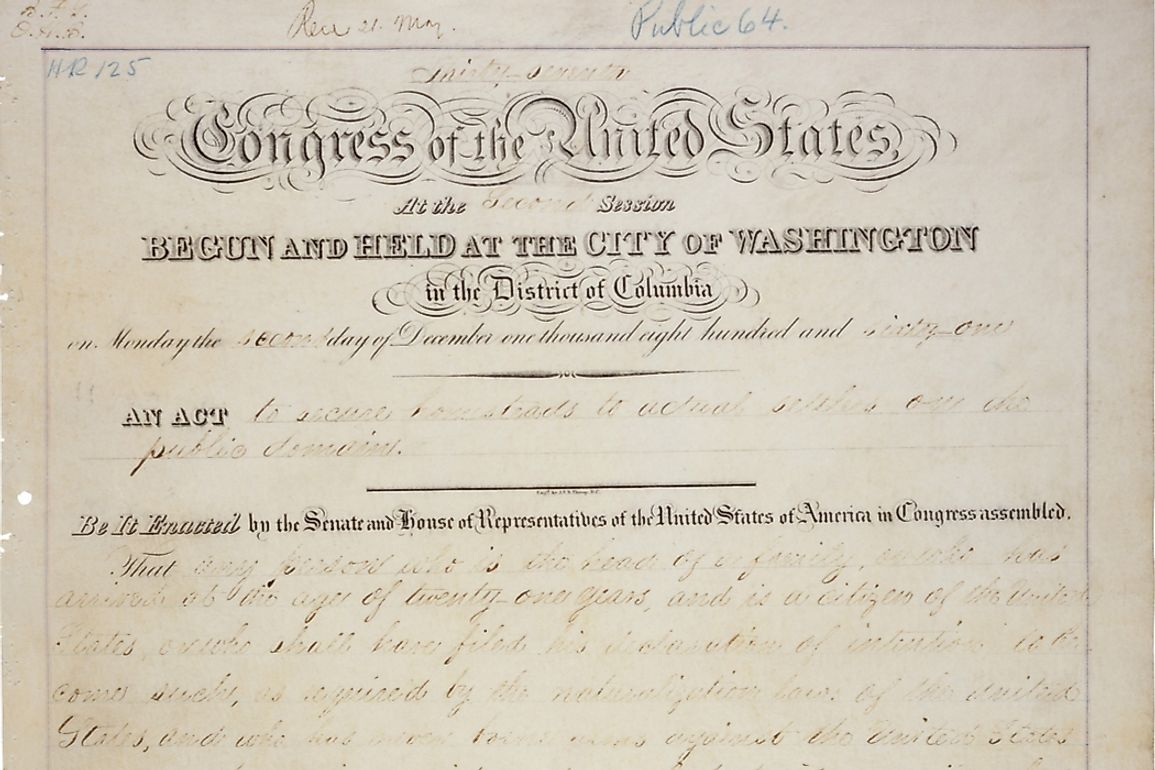What Was the Homestead Act?

The Homestead Acts are a series of laws passed by the US Congress that allowed applicants throughout the United States to own land. In general, about 270 million acres of land was issued to 1.6 million people, a majority of who lived west of the Mississippi River. The first homestead act was passed in 1862 and was thereby referred to as the “Homestead Act of 1862”.
Homestead Act of 1862
The Homestead Act of 1862 is perhaps one of the most important legislation adopted by the Congress. It was signed into law by President Abraham Lincoln on May 20, 1862 after the southern states seceded from the union. The Act issued 270 million acres, approximately 10% of the land mass, to the public. Head of households or those who were at least 21 years of age were eligible to own a 160-acre parcel of land. Settlers, immigrants, former slaves, farmers without land, and single or widowed women made applications and took the challenge of proving to the government that they could keep the land. Each person issued with the land had to build a home and live in it, make developments, and practice farming for five years before being allowed to own the land legally.
The Filing Process
Interested applicants had to first file their intentions at the land office within their locality. The office conducted previous land ownership claims and determined whether the applicant was suitable or not. Suitable applicants paid a filling charge of $10 to claim temporary ownership a $2 commission to the land agent. Armed with applications and land receipts, the homesteaders went back to the land to begin developing and farming, which were the requirement that had to be fulfilled. After five years, the homesteader was ready to take legal ownership of the land; he had to find two neighbors to vouch for him and sign an affidavit that he had lived in the land and developed it. After successfully completing the process, the applicant paid a $6 fee and was awarded a patent for the land signed by the President of the United States. The Act remained in effect for almost a decade until Congress repealed it in 1876. Provisions were made for Alaska where the last parcel issued under the law was made in 1988.
Effect of the Homestead Act on Migration
The potential for acquiring free land attracted thousands of settlers to Nebraska, Kansas, Oklahoma, Dakota territories, and the western states. African Americans were enticed to move from the south with the hopes of securing land. It is estimated that 25,000 black individuals moved to Kansas in the 1870s and 1880s as part of the “Exoduster Movement”, an exodus of African Americans escaping the Jim Crow oppression.







